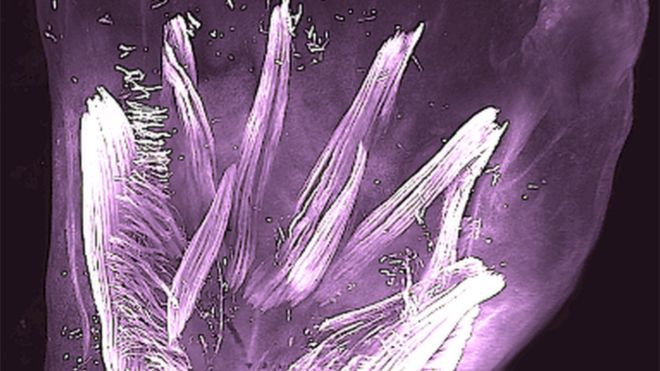Oct 03 2019
Developmental Biology Reveals Evolutionary History
 The notion that ontogeny (development from a fertilized egg to adult) recapitulates phylogeny (evolutionary history) is an outdated notion that has been scientifically rejected. That does not mean, however, that evolutionary history is not reflected in developmental pathways. Creationists often conflate the two in order to create a strawman of the current scientific position.
The notion that ontogeny (development from a fertilized egg to adult) recapitulates phylogeny (evolutionary history) is an outdated notion that has been scientifically rejected. That does not mean, however, that evolutionary history is not reflected in developmental pathways. Creationists often conflate the two in order to create a strawman of the current scientific position.
The difference is interesting and makes sense. What does not happen (and why should it) is stages of embryonic development passing through adult forms of ancestral species. What does happen is stages of embryonic development passing through embyronic forms of ancestral species. This about evolution and development this way – evolution often occurs through altering developmental pathways. But this alteration can occur anywhere along the developmental timeline.
What evolution cannot do is rewrite the genetic code from the ground up. It can only alter the existing code. As evolutionary history gets longer and longer, therefore, the developmental pathway of living creatures gets more and more convoluted and tortuous. At no point can evolution “clean up” the code. So contemporary animals do not develop in a straight line to their mature form. They take a twisting and winding course that reflects their past history. But of course this path does not pass through the adult form of their ancestors, because development doesn’t follow those old pathways all the way to their conclusion. They are diverted along the way.
As the technology to perform high definition 3D scans of embryonic anatomy improve, we are finding more and more examples of this phenomenon. A recent paper gives a dramatic example – Development of human limb muscles based on whole-mount immunostaining and the links between ontogeny and evolution.
The researchers looked at the muscles of the hands of fetuses from 7-13 weeks gestation. They found that during this time they develop extra muscles not found in newborn babies, the dorsometacarpales. This is an extra muscle to each finger that would make it more dextrous. It is retained only in the thumb, and then lost through further development in the other fingers.
These muscles are present in lizards, but have been lost in the evolution to mammals. Human embryos develop about 30 limb muscles, but lose 10 of them, retaining only 20 at birth. Some mammals, specifically primates, have more dextrous hands and feet for grasping and also remain more of these muscles. The lost muscle either fuse with other muscles during development, or they fade away completely.
This is not uncommon during development, for a tissue to develop and then not last. Development can be as much about taking away and adding. It’s not clear why this evolutionary change occurred. It may be that our ancestors simply did not need the muscles, and so there was no evolutionary pressure to keep them from not persisting. Or perhaps dexterity was sacrificed for another gain, such as strength or stability.
Regardless of the cause, this is a clear example of an evolutionary signature during development. It is often the case that when a structure or physiological function is no longer needed or is in the way, the genes are not completely deleted, they are just turned off. Structures may fail to develop at all, or may develop and then wither. Birds, for example, have the genes for teeth. They are simply not activated during development, but they can be experimentally.
This is profound evidence for evolution. There really is no other reasonable interpretation. Of course a creationist can always say that God just happened to make things work that way, which is really just a way of rendering creationism non-falsifiable, meaning not science. Evolutionary theory, however predicts that the remnants of evolutionary history should be left behind in extant organisms. The theory itself does not predict the details of exactly what form those remnants will take, but it does require their existence. We see these remnants in genes, we see them in anatomy, and we see them in developmental biology.
Why else would human fetuses develop lizard muscles in their hands and then delete them?






